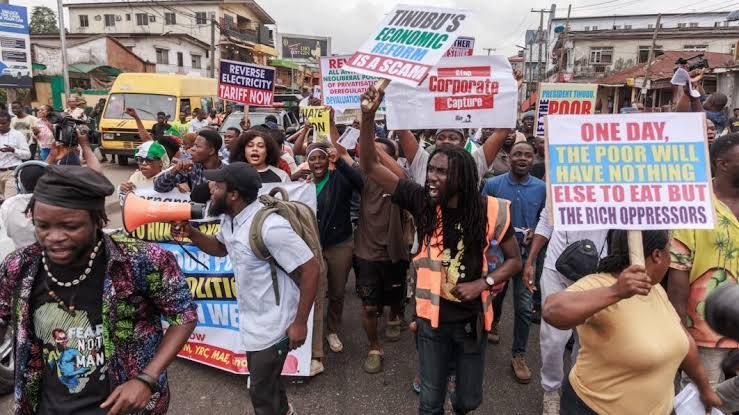By Dr. Charles Obiajulu Ugwu
I keep looking for a vocabulary large enough to carry the mess we have built, something sturdier than “crisis,” sharper than “conflict,” more honest than “rules-based order.” None of these phrases quite hold. What we inhabit now is a choreography of distortions: wars framed as stabilizers, institutions that mistake recitation for restraint, great powers laundering coercion through moral theater. The abnormal has found a home in the everyday. We are not sliding toward catastrophe in a moment of panic; we are organizing it calmly, procedurally, as if catastrophe were a policy instrument.
This is not a lament. It is an audit.
I. The Machinery of Permanent Emergency
War has become a subscription service renewed by inertia, funded by habit, justified by vocabulary. Europe’s bloodlands are once again an artillery laboratory. Russia’s full-scale invasion of Ukraine, underway since February 2022, has hardened into a grinding, technologically saturated conflict whose intensifications and “pauses” track more closely to diplomatic calendars than to human need. UN monitors reported that July 2025 saw the highest monthly civilian toll in three years with 286 killed and 1,388 injured an index of escalation that punctures the soothing fiction that the war is somehow “stabilizing.”
It would be comforting to imagine Ukraine as an outlier. It is not. In June 2025, Israel and Iran fought directly for nearly a fortnight, a twelve-day war that ruptured decades of rules, real and imagined, about how far the shadow struggle could go before torching the curtains. Analysts detail how airspace control, long-range precision, and cyber-electronic warfare collapsed distance and compressed decision time, an escalation machine with a hair trigger. Iranian authorities, tallying the domestic aftermath, acknowledged tens of thousands of arrests tied to the conflict’s internal reverberations. “On pause” is not a peace; it is a breath held under water.
Zoom out: the Red Sea crisis, driven by Houthi attacks on maritime traffic, has bent shipping routes around Africa, jacking insurance, re-pricing time, and reminding the global economy that geography still holds veto power. Analysts have counted hundreds of strikes and a multi-actor military response; shippers have downgraded guidance; vessel activity through Saudi Red Sea ports has sagged by nearly a half. The world’s trade aorta can still be bruised by a single fist.
What’s distinctive about our moment is not simply that there are wars, but that the infrastructure of normal life now expects them. They are baked into bond spreads, hedged in commodities, used by political coalitions to energize their base, and by technology sectors to justify the next procurement cycle. Stockholm’s peace researchers cut through the euphemism: global military spending rose for the tenth straight year to a record $2.718 trillion in 2024, the steepest annual rise since the Cold War. We are paying for fear, for posture, for the illusion that enough steel can purchase safety.
The data on organized violence reinforces the intuition. The Uppsala Conflict Data Program reports a sharp increase in conflicts and wars, with Ukraine the world’s deadliest battlefield in 2024 and extraordinary civilian exposure in Gaza and Lebanon. This is not anecdote. It is trend.
II. The Hollow Guardians and the Theater of Rhetoric
Institutions are supposed to convert danger into rules. The United Nations was meant to be memory institutionalized: a guardrail born from the knowledge of what unguarded power does. Yet veto arithmetic now outmuscles moral arithmetic. In 2024, the Security Council saw its highest number of failed resolutions due to vetoes since 1986 eight in total with unanimity down to 65 percent. That is not an esoteric statistic; it is the sound of a brake line snapping.
Look also at the longer record: the Council’s veto ledger, meticulously maintained, reads like a rhythm section to stalemate. Certain powers have turned the veto into a domestic talking point and a foreign policy habit. Everyone can quote the Charter; fewer accept its costs.
Meanwhile, the humanitarian storyline has become a drumbeat that, bang the numbers, and perhaps conscience will wake. It has not. At the end of 2024, 123.2 million people were forcibly displaced, roughly one in every 67 human beings. Sociologically, that is a re-engineering of normal: more people will learn the world through displacement than through stamps in a passport. Even the heartening figure nearly ten million returns in 2024 arrives with a caveat: many returns were precarious, coerced by exhaustion and the fatigue of exile.
We should name the deeper distortion: a surplus of language and a deficit of enforcement. “International law” has become a talismanic phrase uttered by violators and victims alike; “rules-based order” a brand deployed by those with the loudest microphones. Press releases do not move artillery. Moral theater does not protect a convoy. The dissonance between statement and structure corrodes belief itself.
III. Escalation Without Reflection: Technology’s Promise and Peril
War has always been a technology story, but the pace and coupling of today’s systems are new. Autonomous and semi-autonomous targeting, long-range precision, mesh networks, commercial satellite intelligence, synthetic media, and cyber-electronic suppression now form a layered system where decision time shrinks exactly when prudence should insist on more. The result is escalation velocity the risk that a local burst propagates across domains before the political mind has even parsed the signal.
Ukraine is the classroom. July’s civilian casualty spike the highest in three years coincided with intensified use of glide bombs and combined strike packages against populated areas. This pairing of lethality and tempo is not accidental; it is doctrinal. In the Red Sea, cheap drones and anti-ship missiles have extended the reach of a non-state actor into global shipping lanes, extracting trillion-dollar anxieties with million-dollar tools. Maritime insurers do the math; households pay the surcharge.
The same technologies that promise “precision” also widen the aperture of harm. Automation collapses the distance between command and consequence. Disinformation now often AI-assisted poisons the pre-political sphere, where citizens form judgments about war and peace. The thing about fog is that it doesn’t just obscure; it persuades you that you are not in it.
IV. The Economics of Disorder
Conflict now sits at the center of macroeconomic planning. Markets price it; supply chains route around it; sovereigns fund it. When Red Sea attacks forced large segments of global shipping to swing around the Cape of Good Hope, it wasn’t merely a story about missiles rather it became a story about freight rates, delivery windows, and the invisible tax citizens pay when geography rebels. Rerouting shaved activity at Saudi Red Sea ports by roughly 45% versus 2023 levels; shipping giants publicly trimmed guidance, citing the cost and uncertainty of operating under threat.
SIPRI’s tally of global military expenditure stood at $2.718 trillion and demands a question usually avoided in polite company: what is the opportunity cost of permanent mobilization? Every dollar that fortifies a bunker is a dollar not insulating a school. Some defense is non-negotiable; but a decade-long, across-regions surge suggests normalization, not exception. In peacetime language, that is a reallocation of planetary effort away from resilience (health, climate adaptation, education) and toward security theater.
V. The Moral Distortion: When Words Become a Currency of Hypocrisy
There is a special corruption that comes from saying the right thing and doing the opposite. Great powers preach restraint and ship weapons; they praise “de-escalation” while subsidizing escalation intermediaries; they declare civilian protection and frame mass displacement as regrettable externality.
The world hears the sermon and sees the sale. This gap is not merely cynical; it is strategic oxygen for cynics everywhere. When institutions fail to enforce their own vocabulary, every local strongman learns the lesson: say the right words, do the useful thing, expect no consequences.
VI. Case Studies in Distortion
1) Ukraine: The Metronome of Suffering
Three numbers matter. First, OHCHR’s running ledger of civilian casualties shows tens of thousands killed or wounded since 2022 which lreminds us that “frontline” is a human geography, not a line on a map. Second, the monthly spikes (June–July 2025) reflect both tactical choices and the stress of competing escalations. Third, the endurance of the conflict revealed that despite diplomatic flurries and summit photo-ops exposes the limits of deal-making disconnected from enforcement. Any “pause” that does not sever the logistics of destruction is merely a rest before the next movement.
2) Israel–Iran: The Short War That Rewrote Distance
Thirteen to twenty-four June 2025 is a cautionary tale. Direct strikes, airspace control, and electronic warfare condensed the strategic map. It is not just that two enemies fought directly; it is that the engagement demonstrated how “regional” the global economy is, how quickly energy markets, shipping risks, and alliance calculations can be yanked into a vortex. The arrests and domestic repression reported inside Iran during and after the war illustrate another feature of modern conflict: domestic society becomes a battlespace for both target and instrument.
3) The Red Sea: A Littoral Lesson in Leverage
From late 2023 through 2025, Houthi attacks targeted maritime traffic. The response was international coalitions, naval operations with names that sound like video games (Prosperity Guardian, Poseidon Archer, Rough Rider) that produced hundreds of airstrikes. And still, the threat persisted and periodically intensified. The lesson is grim: where chokepoints exist, non-state actors with modest arsenals can produce strategic-level economic disruption. Global trade is elastic; trust is not.
4) The Ledger of Displacement
UNHCR’s Global Trends is the moral accountant the world rarely invites to the stage. One in 67 people displaced is not just a figure rather it is a redefinition of “home,” “border,” and “belonging.” The “returns” figures, though welcome, cannot be read as resolution; many are returns to rubble, to fragile ceasefires, to places where the institutions that guarantee safety no longer exist. A world that tolerates this scale of motion without building a politics of welcome is a world tightening a spring.
VII. Why the Guardrails Failed
Structural vetoes
When the Council’s design gives five capitals a standing escape hatch from accountability, norms will bend around the hatch. The recent spike in veto use and failure of resolutions is a signal of system fragility, not merely diplomatic fashion.
Enforcement gap
International law without credible enforcement is a literature. Its existence matters; its impotence matters more.
Incentive alignment
Arms industries, political incentives, and media economies all benefit differentially and often unintentionally from sustained conflict. No conspiracy required; only structures designed to reward the continuation of the very problems they manage.
Temporal myopia. Escalation velocity has shortened the thinking cycle. Leaders reach for tactics that gratify the hour and mortgage the decade.
VIII. What Would Repair Even Look Like?
A serious answer must be uncomfortable. It must cost someone something.
1. Veto Reform by Use-It-Own-It:
Every veto should trigger automatic costs financial contributions to humanitarian response, mandatory General Assembly debate under “Uniting for Peace,” and public legal opinions by independent panels on the compatibility of the vetoing state’s position with international law. If you will paralyze the Council, you must at least pay the hospital bill.
2. Escalation Brakes for the Missile Age:
A standing, treaty-backed protocol for de-confliction covering cyber, space, and autonomous systems that must include data-sharing thresholds, third-party verification, and “cooling-off” clocks before cross-border retaliation. This isn’t sentiment; it’s engineering.
3. Sanction Literacy and Consistency:
Sanctions regimes should be time-boxed, evidence-tested, and subject to automatic human impact reviews. A sanctions policy that does not model humanitarian blowback is a moral tax hidden in technocratic language.
4. Humanitarian Safe-Harbor Corridors with Embedded Deterrence:
Designate routes and nodes (ports, crossings, hospitals) as protected commons. Violate them and trigger pre-agreed, automatic penalties that cannot be vetoed including financial seizures, trade restrictions calibrated to the violator’s exposure.
5. A Global Displacement Compact 2.0:
Shift from charity to apportionment. If one in 67 humans is displaced, then one in 67 units of global public finance should be indexed to protection, integration, and city-level resilience. Cities host people; fund cities.
6. Civic Immunity for Truth:
Fund independent verification (satellite, open-source forensics) as a global public good and protect it with legal immunities. The next war will be decided as much by narrative integrity as by matériel.
None of this arrives without politics. Great powers will dislike being bound, mid-powers will fear being trapped, minor powers will suspect a new paternalism. And yet the alternative is present tense: a world economy metastasizing around fear, an information sphere optimized for indignation, a moral vocabulary that has become an alibi.
IX. The Counter-Argument and Why It Fails
Some will say conflict is a grim constant of human affairs, and that the 20th century was worse by far. They will gesture at data showing long-term declines in war deaths. True until it isn’t. Our World in Data’s charts show fewer deaths than mid-century cataclysms; but trend lines are not seat belts. When major wars return to industrial intensity, when civilian targeting climbs, when refugee figures tear past historic highs, the “we’re still better than the 1940s” argument is not analytical; it is anesthetic.
Others will claim that higher defense spending deters war. Sometimes, deterrence is real. But the last decade’s synchronized surge in military budgets across regions correlates less with peace than with a normalization of emergency. Deterrence without diplomacy is an arms race; deterrence without enforcement is theater; deterrence without humility is how miscalculation eats empires.
X. The Human Ledger
Numbers matter, but only because they stand for someone. The July 2025 Ukraine figures; the civilians in Gaza and Lebanon whose deaths UCDP tallies in grim ratios; the sailors killed in a Red Sea blast who never imagined the world’s arguments would board their ship; the families in Kharkiv or Khorramabad who learn what geopolitics tastes like when it falls from the sky.
The most terrifying feature of our era is not the scale of harm but the steadying of our gaze. We are learning to look at horror and see a schedule. We refresh the browser, we price the risk, we wait for the next communiqué from a podium whose microphones have outlived their purpose.
XI. The Work of Refusal
Civilizations do not fall only by invasion; they also fall by rehearsal. The rehearsal consists of three acts: normalize the unacceptable, euphemize the indefensible, outsource the unmanageable. We are deep into the third act.
Refusal begins simply: stop pretending that statements are instruments, that institutions without teeth are guardians, that militarized budgets are virtues unto themselves. Insist on consequence architecture mechanisms that tie violation to certain cost. Build it at the UN, yes, but also in regional bodies, trade compacts, and city networks that increasingly carry the weight nation-states shrug off.
Refusal will require courage from those who do not ordinarily practice it: diplomats who name hypocrisy even when it is friendly, corporate leaders who price ethics as more than a reputational hedge, publics who punish performative outrage, media that holds a line between description and amplification.
There is room, still, for hope, but only the muscular kind. UNHCR records the highest number of returns in years; even in war’s long shadow, people move back toward home. That longing to belong without fear is the most subversive force on Earth. Policy should conspire with it.
XII. What We Owe the Future
We owe the future something sturdier than the inheritance we are assembling: a planet wired for misunderstanding; a law that speaks but does not act; a market that prices risk but cannot plan decency. The way out is not a manifesto of adjectives. It is a kit of tools joined to a willingness to pay their price.
Tie veto to consequence.
Slow the tempo where machines accelerate it.
Embed humanitarian corridors in law with teeth.
Finance cities as hosts, not victims.
Protect the truth infrastructure of war.
Reward de-escalation not with applause but with material advantage.
Above all, rebuild the habit of restraint around political, linguistic, technological. Restraint is not weakness; it is the geometry of survival.
We are not at the apocalypse yet. We are doing something more frightening: professionalizing the logistics of getting there. The way back begins by breaking the choreography this time by replacing the theater of principle with the practice of it.
That will not trend. It will not satisfy a news cycle addicted to velocity or governments addicted to spectacle. But it might keep our children from reading the last chapter of a story they did not write.
References
UN Human Rights Monitoring Mission in Ukraine (OHCHR), updates on civilian casualties, June–July 2025.
ACLED, “Twelve days that shook the region: Inside the Iran–Israel war,” July 4, 2025; and analysis of Red Sea operations and strikes, 2024–2025.
UN Security Council Report & UN research portal: veto statistics and 2024–2025 trends.
SIPRI, “Trends in World Military Expenditure, 2024” and press release (April 2025).
UNHCR, Global Trends (2024) and Mid-Year Trends (2024): displacement totals and returns.
UCDP/PRIO and Uppsala University releases on battle-related deaths and the rise in conflicts (2024–2025).
Associated Press reporting on Red Sea maritime attacks and casualties.
OceanMind analysis on shipping rerouting impacts (2023–2025).
About the Author
Dr Charles Obiajulu Ugwu is a management consultant, adaptability thought leader, and regenerative systems expert.



























